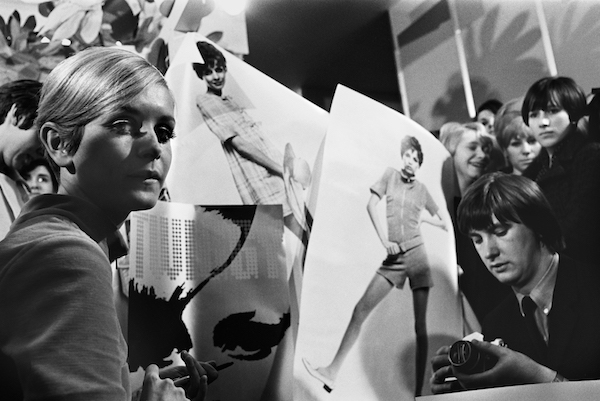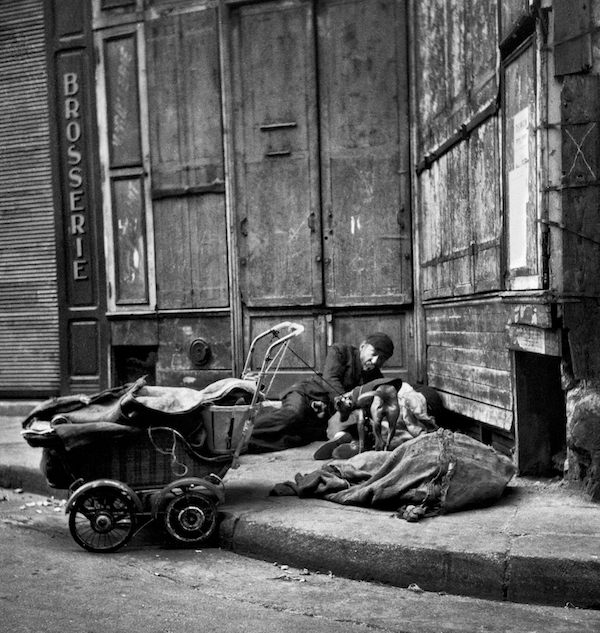BRIGHTON: Marilyn Stafford thought of herself as a jobbing photographer; she had a living to earn as a single mother. When she hung up her camera in the 1980s and stuffed her archives and negatives under her bed, she never dreamed that a second lifetime later, she would be catapulted into the limelight. Yet a first major retrospective of her 40-year career is now showing at the Brighton Museum and Art Gallery in East Sussex, UK.
“My work had been newspaper work, magazine work rather than pretty pictures,” Stafford, a zesty 96, tells Artlyst in an interview. “I was a working photographer, finish. Until 2015 when she met Nina Emett, founder of FotoDocument, a not-for-profit that focuses attention on global issues through documentary photography. It turned out Stafford had worked years earlier with Emett’s aunt had even met Emett as a child. Emett asked to see Stafford’s long-neglected archives and “decided she liked my work very much, wanted to promote it.” “Serendipity raised its pretty head”, says Stafford. “It was meant to be.”

Marilyn Stafford: A Life in Photography, the Brighton show, with an accompanying book, is the curatorial product of Emett’s 7-year trawl through those archives. Says Emett, Stafford’s photos “reveal a devilish eye for detail, a curiosity to ‘pop the hood and look behind the scenes, a huge respect for form and structure, a penchant for humorous juxtaposition, an emotional connection to whoever lies beyond the shutter curtain.”
Born Marilyn Gerson in 1925 in Cleveland, Ohio, during the Great Depression, she was early aware of the desperation of some people’s lives. Her own family was relatively comfortable, but she saw in LIFE magazine Dorothea Lange’s photos of other families fleeing the Dust Bowl famine. Those images, particularly Lange’s iconic “Migrant Mother”, stuck with her.
Her first camera was a child’s Kodak Box Brownie and she wasn’t impressed with her results. Her thing was theatre. She was a child actress, majored in drama at Wisconsin U and hit New York in 1947, hoping to break through on Broadway.
Still, fate seemed to have other ideas for her. To pay her rent, she worked as a photographic assistant to Francesco Scavullo, then doing catalogue shoots, later famous for his work on Vogue and Cosmopolitan.
Then, a chance encounter in 1948 wove together what were to become two strands of her career, social conscience and celebrity portraiture. Friends making a documentary on Albert Einstein’s pacifist campaigns invited her along as their stills photographer. Handed a 35 mm single-lens reflex camera that she had never used before and given a quick lesson in the back of the car on the way to Einstein’s house, “I did what I had to do — focus and get the shots,” Stafford says.
Another chance brought her an invitation to travel with a friend to Paris, where a serendipitous encounter at a birthday party got her a gig singing at Chez Carrère, a chic dinner club off the Champs Elysées.
Serendipity is a word Stafford often uses: “I think there are leprechauns or little guardian angels hovering over me”, she says.

Chez Carrère was the “In” place — Eleanor Roosevelt dined there, Robert Capa drank at the bar, Edith Piaf was a regular along with Charles Aznavour, Bing Crosby, Noel Coward. Stafford chronicled their world, shooting unposed portraits in moments of casual relaxation.
Capa suggested working for his Magnum Agency co-founder “Chim” Seymour, a chance she turned down. They were war photographers. It was a risk too far. So instead, she turned to fashion shoots. Within a few years, Capa and Chim were dead.
Another serendipitous encounter led her to Henri Cartier-Bresson. On a ferry to England, she struck up a friendship with the Indian writer Mulk Raj Anand, famous for portraying the lives of India’s poor. Anand introduced her to Cartier-Bresson, who helped her develop her distinctive photographic style – deceptively casual, psychologically revealing.
In Paris, she filmed slum kids playing in the street and brought fashion photography out of the studio. A shoot in Montmartre captured an urchin in ragged dress perched moodily on a railing, pointedly ignoring the sophisticated model posing nearby. A fashion editor for the Figaro newspaper dismissed Stafford as a ‘reverse snob’ but her pictures sold.
Six months pregnant with her daughter Lina, she reported from Tunisia in 1958 on the plight of refugees fleeing the Algerian war. Cartier-Bresson helped her pitch to London newspapers. The Observer fronted two of her photos, including one of a mother and child, painfully echoing Lange’s 1930s Dust Bowl migrants.
Over the next two decades, she lived and photographed in Rome, Beirut, New York and London, initially with, and then without, her first husband, the British journalist Robin Stafford. In London, she co-founded her own agency with the French photographer Michel Arnaud covering the international fashion show circuit. It was hard work, but it gave her a living and the time and money for personal projects, notably in India.
Armed with introductions from Anand, she carried out multiple reporting missions in India, photographing rural communities, agricultural modernisation projects, Bengali rape victims and street children, the mediaeval temple ruins of Hampi, and above all, in 1972, a close-up study of the private and political life of Indira Gandhi, India’s first and only woman prime minister.
She wanted to show up injustice and tell neglected stories. “Photography, when used honestly, is a witness, a powerful record of human experience,” she said. Still, by the 1980s, she’d had enough. She had funding for a video project on children’s stories from immigrant communities in Britain but no buyer.
“I decided there was nothing more in the creative area for me, so I went my merry way and got on with life,” she said. “Photographers don’t grow old; they just grow out of focus.” Or perhaps not. Together with Emett, she set up 2017 the Marilyn Stafford FotoReportage Award. Supported by Nikon, it offers a £2,000 annual grant for women documentary photographers working anywhere in the world on uplifting social, environmental, economic or cultural projects.
Applications for this year’s award open on 8 March 2022

